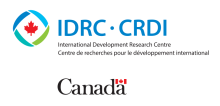Resource information
Poverty, property rights and distributional implications of community-based resource management have become major topics of discussion and debate in recent years. This study tries to examine the contribution of community forestry to household-level income with particular emphasis on group heterogeneity and equity in benefit distribution. The assessment of household level benefits suggests that poorer households are currently benefiting less in absolute terms from community forestry than less poor households. In terms of the contribution of forests to household income, the study results suggest that the poor are not necessarily more dependent than the rich, a finding that contradicts results from other similar studies. Econometric analysis suggests that income from community forests is related to socio-economic attributes and private resource endowments of households. Households with land and livestock assets, as well as upper caste households gain more from the commons, while better educated households depend less on forest resources. Female-headed households benefit less from community forests, further aggravating the inequity in distribution of benefits. The study makes a number of recommendations to improve community forest management in Nepal, which include, due consideration for community needs in selecting species for community forestry, transferability of user rights, which would allow less endowed households to benefit more, and more and equitable representation of women and disadvantaged groups in forest management committees (JEL Q2, Q23).


